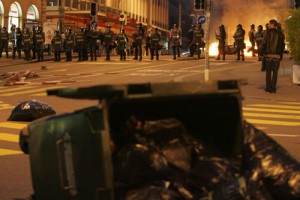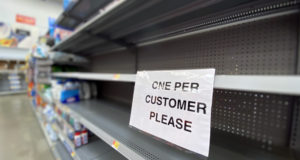 As we prepare our families and loved ones for the deterioration of our culture and lifestyle, it bears watching how the government is responding to the warning signals that are now obvious to anyone who is paying attention.
As we prepare our families and loved ones for the deterioration of our culture and lifestyle, it bears watching how the government is responding to the warning signals that are now obvious to anyone who is paying attention.
We already know that even though tax revenues are falling, the government is spending record amounts of money, a situation which is unsustainable and which organizations like Moody’s (that track and value the safety of government debt) are warning that social unrest is a growing possibility.
What you may not have heard before is the US military is planning to deal with a violent, strategic dislocation within the borders of the US, which it believes could include domestic resistance, economic collapse, pervasive public health emergencies and/or the loss of a functioning political and legal system. The previously secret documents were prepared by the US Army War College in 2008 and contemplate the situation if there is widespread civil disobedience or a multi-state civil conflict or disturbance.
The report makes clear what I think we all know, that the government is not going to go quietly into the night as things start to break down. In fact, the report makes clear that the Army will abandon overseas commitments to restore order at home. Presumably people like you and I-those preparing for just such an event-will be the new enemy.
Meanwhile, the possibility of a complete collapse is now being discussed in more ‘mainstream’ circles. In the last few months there have been allusions to the possibility of crash-induced unrest from the head of the World Trade Organization, the International Monetary Fund, the World Bank, Congressmen and Senators, Britain’s MI5, the Chairman of the Joint Chiefs of Staff and leading economists.
When the US Director of National Intelligence commented on the situation recently, he reminded listeners of the chaos which reigned in much of the world after the market collapse in 1929. Others have pointed out that much of the world lived a more rural, rugged and individual lifestyle then than today, where much more of the world’s population is urban and dependent on fragile systems to deliver food, water and comforts from distant areas.
Part of your emergency plans should include not just food, water and shelter, but an evaluation of your physical security within the community, and whether long-term survival will require relocation.
 Off The Grid News Better Ideas For Off The Grid Living
Off The Grid News Better Ideas For Off The Grid Living



